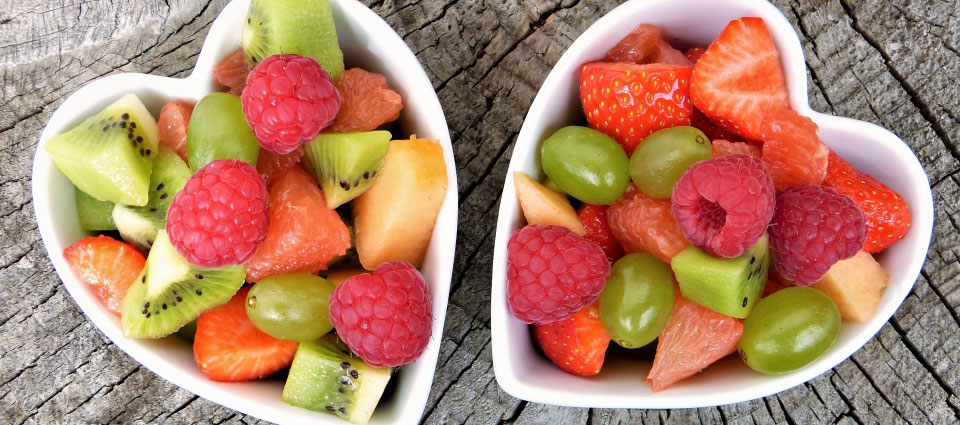Most Influential Health & Wellness Trends
January 08, 2020The start of a new year means that many consumers have a renewed interest in health and wellness.
Diet, exercise and weight loss are the top three most-common New Year’s resolutions. Four of the 5 health and wellness trends we rounded up relate to one of the top resolutions.
Read on to find out what the top trends are and tips for how to leverage those trends in your marketing.
Trend #1: Functional Foods
“The food you eat can either be the safest and most powerful form of medicine … or the slowest form of poison.” – Ann Wigmore, holistic health practitioner and raw food advocate
The healthfulness of a food product is the #3 reason U.S. consumers make a purchase—it’s after taste and price but more important than convenience and environmental sustainability. Almost 1 in 4 U.S. consumers actively look for foods or follow a diet for the health benefits. Which health benefits do consumers want to get from their food?
- Cardiovascular health
- Weight loss/management
- Energy
- Brain function
- Digestive health
- Muscle health/strength
- Immune function
- Diabetes management/blood sugar
- Emotional/mental health
- Bone health
- Athletic health
Most consumer think fiber, whole grains and protein from plant sources are healthy. For many, there is also a correlation between health and sugar intake. Eight in 10 U.S. consumers try to avoid or limit their sugar intake and 3 in 10 use low or no calorie sweeteners.
About 2 in 3 U.S. consumers think fresh produce is part of a balanced diet and over half of U.S. consumers correlate fresh produce with heart health, healthy weight and essential nutrients in a diet.
How to Market Functional Foods: Point of sale signage that highlights the functional benefits of food can help your shoppers find food that provides the benefits they seek. Sharing the functional benefits of food can also make good content for your social media channels.
Trend #2: Gluten-Free
“Gluten is this generation’s tobacco.” -Dr. David Perlmutter, neurologist and author
The current global market for gluten-free is valued at over $4.7 billion. By 2020, it’s forecast to be worth $7.59 billion.
Gluten-free foods are targeted to people who have Celiac disease, gluten sensitivity and are health-conscious. The top reason consumers adhere to a gluten-free diet is a gastrointestinal gluten allergy.
However, just 8% of U.S. consumers who buy gluten-free products have a gluten intolerance while
35% of U.S. consumers who buy gluten-free products have no special reason for purchasing them.
How to Market Gluten-Free Foods: Consider making a gluten-free guide to your store. Include which items in the bakery, frozen and other departments have gluten-free products. Then share your guide via your channels, like email and social media.
Trend #3: Sustainability
“We can’t just consume our way to a more sustainable world.” -Jennifer Nini, author and activist
The topics that consumers want food retailers to share about openly and honestly include how employees are treated, the humane treatment of animals, how they are improving impact on environment, product/ingredient supplier choices and how the food retailer gives back to the community.
Which factors are considered important when buying food?
- Knowing where the food comes from
- Knowing the manufacturer has a commitment to producing food in an environmentally sustainable way
- Ability to access information about how food is produced
- Knowing that food was produced with animal welfare in mind
- Knowing that food was produced with modern farming technologies
Which demographics are the most interested in their food’s sustainability? The Hispanic and African American demographics are much more interested than the non-Hispanic whites in the U.S. Women are also more likely to find this important than men.
For more on this topic, read our Sustainability Rising blog article here.
How to Market on Sustainability: Does your store make it a point to carry eco-friendly products? What kind of initiatives/efforts does your store take to protect the environment? Communicate the answers to these questions on your digital channels. Add a page to your website and share periodic eco-effort updates on your social media channels.
Trend#4: Clean Labels
“When you start eating food without labels, you no longer need to count calories.” -Amanda Kraft, Food Matters
Certain claims on product packaging motivates more than half of all U.S. consumers to purchase the product, including “natural,” and “no preservatives.”
The product claims shoppers look for when buying food products are:
- 71% Avoid negatives (no/low fat, no allergens, no preservatives, no trans fats, antibiotic-free, etc.)
- 64% Minimal processing
- 42% Good source of fiber
- 28% Ethical practices
- 23% Positive nutrition (vitamin-enriched, antioxidant-rich, calcium-fortified, heart-healthy, etc.)
- 21% Heart healthy
Baby Boomers are more likely than Millennials to look at nutritional information (51% vs. 36%).
Boomers check expiration dates, ingredients lists and brand names more often than Millennials.
How to Market on Clean Labels: Highlight products with the claims your customers care about on your social media channels.
Trend #5: Plant-Based Protein
“The future is about a plant-based diet.” –Jamie Oliver, chef and restauranteur
Almost 7 in 10 U.S. consumers are trying to eat more plant-based proteins. Consumers in their 20s and 30s are the most interested in plant-based proteins. A total of 14.7 million U.S. households, or 36% of consumers buy plant-based meats and 48% of U.S. consumers bought plant-based milk.
The top reasons that consumers buy plant-based alternatives include:
- Sustainability/the environment
- Lifestyle
- Ethical treatment of animals
- Influence from family/friends
How to Market Plant-Based Proteins: Use a combination of point-of-sale signage and social media content. Consider making plant-based guide to your store (like the gluten-free guide).

